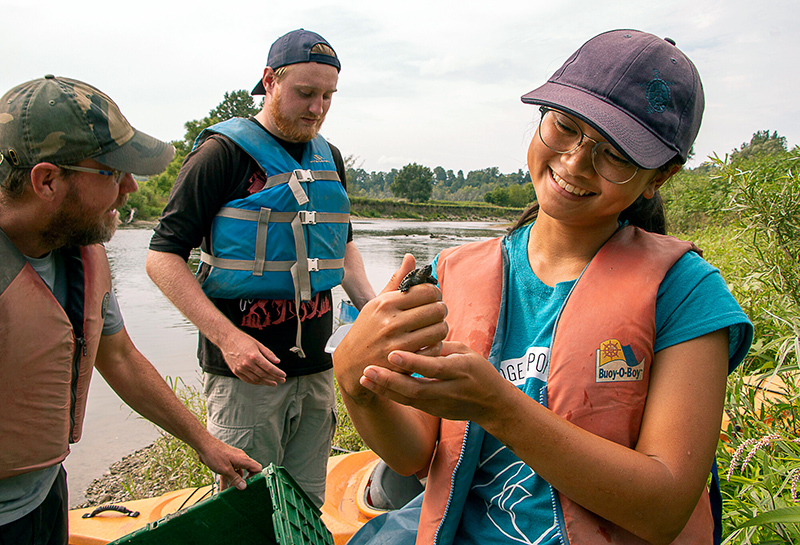Turtle Team 2021 (UTRCA weekly, August 13, 2021)
The Upper Thames River Conservation Authority’s (UTRCA) “Turtle Team” has had a busy spring and early summer. During the lengthy, six week nesting season, the team located hundreds of turtle nests along the river and collected thousands of eggs, transporting them to the UTRCA Watershed Conservation Centre (WCC) for incubation. In late July, eggs of various species of turtles began to hatch, and the team moved into the turtle release phase.
Scott Gillingwater, UTRCA Species at Risk Biologist, has been leading this reptile research and recovery program for nearly three decades. His team has been actively studying and protecting reptiles in southern Ontario, including Spiny Softshell Turtle, Spotted Turtle, Blanding’s Turtle, Northern Map Turtle, Midland Painted Turtle, Snapping Turtle, Queensnake, Eastern Hog-nosed Snake, and Milksnake, among others.
Scott shared that, “The 2021 season has had its hurdles, with a smaller research team due to Covid restrictions, as well as drought, high heat, and then flooding — it has made for an interesting summer! Despite these challenges, our incredible crew made up of Samantha Arevalo, Sean Thorpe, and assistance from William Lyons and various UTRCA staff, have made this one of our top four most successful seasons on record.”

The Turtle Team is now focused on releasing the newly emerged hatchlings back in the areas where there nests were found. On August 9, UTRCA staff released more than 800 endangered Spiny Softshell turtle hatchlings. By the end of the season, Scott’s team anticipates the successful incubation and release of over 4000 Spiny Softshell hatchlings, along with thousands of hatchlings from four other species.
“Reptiles at risk continue to be impacted by threats, but perseverance and hard work are making a positive difference for our local species.” said Scott.
The Thames River is one of Canada’s most southerly watercourses. The river’s location on the northern edge of the Carolinian life zone, connection to the Great Lakes, and moderate climate support a rich aquatic ecosystem, with approximately 90 species of fish, 30 species of freshwater mussels, and 30 species of reptiles and amphibians. Many of the indigenous (native) species that live in the Thames are found almost nowhere else in Canada and a number of these species are designated as species at risk, both federally and provincially. Southern Ontario’s highly developed landscape mean that the river and the species within it face many pressures from urban and rural land uses and human activities.
If you would like to support the work of the Turtle Team, please visit www.thamesriverdonations.ca

